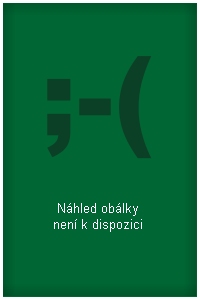
Kód: 04764257
EAA 109: Archaeology and Environment of the Etton Landscape
Autor C. A. I. French, Francis Pryor
A long-term, low-cost rescue project was undertaken in response to gravel quarrying at Maxey between 1983 and 1990. Throughout, the archaeological focus was the more or less concurrent excavation taking place at the Etton causeway ... celý popis
- Jazyk:
 Angličtina
Angličtina - Vazba: Brožovaná
- Počet stran: 205
Nakladatelství: East Anglian Archaeology, 2005
- Více informací o knize

801 Kč
Dostupnost:
50 % šance Máme informaci, že by titul mohl být dostupný. Na základě vaší objednávky se ho pokusíme do 6 týdnů zajistit.
Máme informaci, že by titul mohl být dostupný. Na základě vaší objednávky se ho pokusíme do 6 týdnů zajistit.Prohledáme celý svět
Mohlo by se vám také líbit
-

Dune
249 Kč -

Haunting Adeline
621 Kč -

Berserk Deluxe Volume 2
1092 Kč -

White Nights
71 Kč -

Powerless
268 Kč -

Atomic Habits
330 Kč -

Dune Messiah
228 Kč -

Berserk Deluxe Volume 3
1142 Kč -

One Day
221 Kč -

Berserk Deluxe Volume 1
1115 Kč -

Iron Flame
368 Kč -

Surrounded by Idiots
213 Kč -

Harry Potter and the Prisoner of Azkaban (Minalima Edition)
993 Kč -

Gravity Falls Journal 3
441 Kč -

Heaven Official's Blessing: Tian Guan Ci Fu (Novel) Vol. 1
430 Kč -

The Creative Act
568 Kč -

Dune
276 Kč -

Hunting Adeline
624 Kč -

A Little Life
268 Kč -

Children of Dune
230 Kč -

Heaven Official's Blessing: Tian Guan Ci Fu (Novel) Vol. 2
427 Kč
Dárkový poukaz: Radost zaručena
- Darujte poukaz v libovolné hodnotě a my se postaráme o zbytek.
- Poukaz se vztahuje na celou naši nabídku.
- Elektronický poukaz vytisknete z e-mailu a můžete ihned darovat.
- Platnost poukazu je 12 měsíců od data vystavení.
Informovat o naskladnění knihy
Zadejte do formuláře e-mailovou adresu a jakmile knihu naskladníme, zašleme vám o tom zprávu. Pohlídáme vše za vás.
Více informací o knize EAA 109: Archaeology and Environment of the Etton Landscape
Nákupem získáte 80 bodů
 Anotace knihy
Anotace knihy
A long-term, low-cost rescue project was undertaken in response to gravel quarrying at Maxey between 1983 and 1990. Throughout, the archaeological focus was the more or less concurrent excavation taking place at the Etton causewayed enclosure, a site which was effectively a central point within this part of the lower Welland valley. The Etton Landscape consists of the relict river systems, former floodplain and lowermost parts of the Welland First Terrace gravels between the modern villages of Maxey, Etton and Northborough. Situated on the fringe of this seasonally wet landscape was a series of later Neolithic and Bronze Age monuments and more enigmatic areas of occupation. The principal monuments, other than the Etton causewayed enclosure, were three small henges which exhibited several phases of re-modelling, a C-shaped enclosure, the Etton Woodgate contour ditched enclosure and associated settlement, and four barrows (out of many more that are in the vicinity). The occupation areas were relatively few and ephemeral, often only consisting of a spread of occupation or midden material within the buried soil, a few post-holes and/or pits in no apparent pattern or structure. There is also evidence of field demarcation on the floodplain edge in the later Neolithic. All of these sites straddled the period of later use of the causewayed enclosure, in the third millennium and early second millennium BC. There seems to have been at this time a mosaic of old and new environments, ranging from old woodland to pasture and small zones of scrubby, fen-like carr, with the stream zones being affected by seasonal freshwater flooding and the minor deposition of silty clay alluvium. By the middle part of the second millennium BC, field systems laid out at right angles to the contemporary streams were in use, with successive versions of the same general layout continuing on into the Roman period. Throughout the last two millennia BC there was a gradual opening up of the landscape, on the face of it largely pasture, but probably with some arable cultivation on the higher and better drained ground. By the later Roman period, it appears that the area was more and more affected by the seasonal deposition of alluvium and overbank flooding, which led to the establishment of a loose and scattered layout of farmsteads and associated field systems on the higher parts of the first terrace. By medieval times, the higher parts of the terrace were completely given over to ridge and furrow cultivation, with villages established to the north and south, and the lowest zones occupied by infilled stream courses still remaining seasonally wet and possibly used as seasonal, unenclosed pasture. This more or less remained the case until 1953, when the enlargement of the Maxey Cut effectively drained the lowest parts of the terrace and permitted an expansion of arable agriculture onto the most thickly alluviated parts of the lower Welland valley between Maxey and the fen-edge.
 Parametry knihy
Parametry knihy
Zařazení knihy Knihy v angličtině Humanities Archaeology Archaeology by period / region
801 Kč
- Plný název: EAA 109: Archaeology and Environment of the Etton Landscape
- Autor: C. A. I. French, Francis Pryor
- Jazyk:
 Angličtina
Angličtina - Vazba: Brožovaná
- Počet stran: 205
- EAN: 9780952061625
- ID: 04764257
- Nakladatelství: East Anglian Archaeology
- Hmotnost: 753 g
- Datum vydání: 31. December 2005
Osobní odběr Praha, Brno a 12903 dalších
Copyright ©2008-24 nejlevnejsi-knihy.cz Všechna práva vyhrazenaSoukromíCookies


 Vrácení do měsíce
Vrácení do měsíce 571 999 099 (8-15.30h)
571 999 099 (8-15.30h)